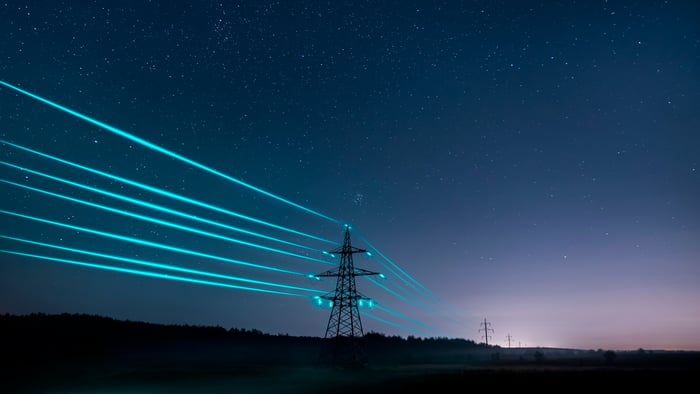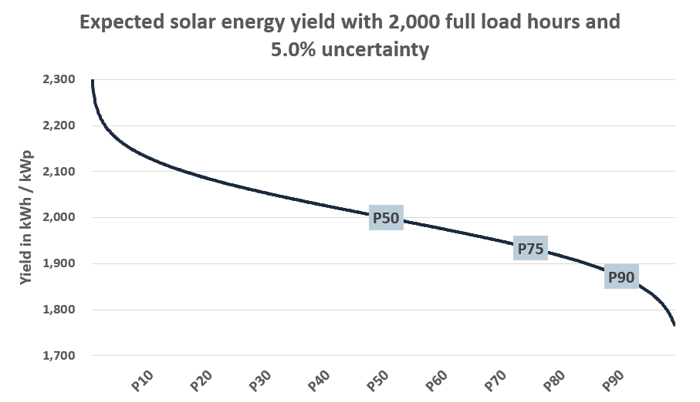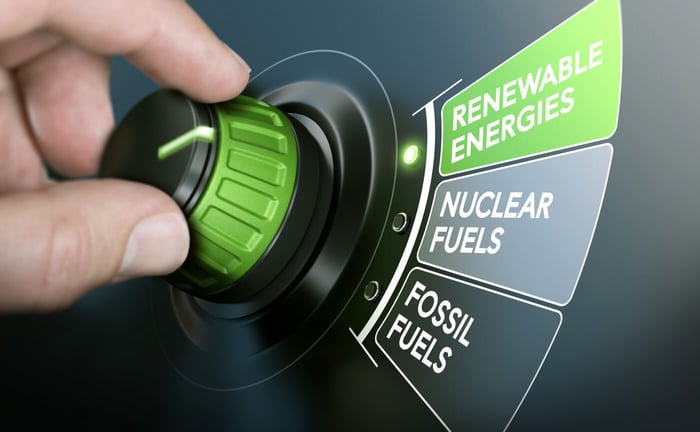When diving into the world of electricity, renewable energy, or grid systems, one fundamental distinction often causes confusion: energy vs power. Although many use the terms interchangeably, from a technical and financial standpoint, they have very different meanings.
Understanding energy vs power is essential for anyone working in energy, finance, or infrastructure sectors.
What is Power?
Power is the rate at which electricity is generated or consumed at a given moment. It measures how fast energy flows and is expressed in units like kilowatts (kW), megawatts (MW), or gigawatts (GW).
In simple terms:
Power = How fast energy is produced or used right now.
For example, a wind turbine might have a rated capacity of 3 MW, indicating the maximum power it can produce at any instant under ideal conditions.
What is Energy?
Energy represents the total amount of electricity generated or consumed over time. It accumulates the effect of power over a duration and is measured in kilowatt-hours (kWh), megawatt-hours (MWh), or gigawatt-hours (GWh).
Key idea:
Energy = Power × Time.
If a 3 MW wind turbine operates at full power for one hour, it generates 3 megawatt-hours of energy.
Power vs Energy: Everyday Examples
Understanding energy vs power becomes easier when we translate it into real life.
Think of driving a car:
Power is like your speed — how fast you are traveling (e.g., 60 miles per hour).
Energy is like the distance you cover — how far you travel (e.g., 60 miles if you drive for one hour at that speed).
This analogy perfectly captures the relationship between rate and total amount.
Household Electricity Consumption Around the World
Understanding energy vs power also means recognizing how electricity usage differs between countries.
Electricity consumption is influenced by many factors — climate, housing standards, appliance ownership, and even cultural habits.
For instance, households in colder regions often use far more electricity for heating, while tropical regions might use more for cooling.
Here’s a global snapshot showing the typical annual household electricity consumption across 20 different countries:
| Country | Typical Household Use (Annual) |
|---|---|
| 🇺🇸 United States | ~10,500 kWh |
| 🇨🇦 Canada | ~11,000 kWh |
| 🇩🇪 Germany | ~3,500–4,000 kWh |
| 🇫🇷 France | ~4,500–5,000 kWh |
| 🇬🇧 United Kingdom | ~3,600–4,000 kWh |
| 🇪🇸 Spain | ~3,000–3,500 kWh |
| 🇮🇹 Italy | ~2,700–3,200 kWh |
| 🇳🇱 Netherlands | ~3,000–3,500 kWh |
| 🇸🇪 Sweden | ~6,000–7,000 kWh |
| 🇳🇴 Norway | ~16,000–20,000 kWh |
| 🇦🇺 Australia | ~6,100 kWh |
| 🇯🇵 Japan | ~4,300–4,500 kWh |
| 🇰🇷 South Korea | ~3,500–4,000 kWh |
| 🇨🇳 China | ~1,300–1,500 kWh |
| 🇮🇳 India | ~1,000–1,200 kWh |
| 🇧🇷 Brazil | ~2,400–2,800 kWh |
| 🇲🇽 Mexico | ~1,800–2,000 kWh |
| 🇸🇬 Singapore | ~7,100 kWh |
| 🇿🇦 South Africa | ~4,500–5,500 kWh |
| 🇸🇦 Saudi Arabia | ~8,000–9,000 kWh |
As you can see, there’s a wide variation depending on where you live.
Households in North America generally consume much more electricity than households in Europe, Asia, or Latin America.
This difference in consumption patterns has major implications when designing energy systems, planning renewable projects, or modeling future energy needs.
How Much Electricity Does a Wind Farm Produce?
To understand scale, consider a wind farm with the following characteristics:
Capacity: 25 megawatts (MW)
Capacity factor: 30%
Hours in a year: 8,760 hours
Annual Energy Production can be calculated by multiplying capacity, capacity factor, and hours in a year:
Annual Production = 25 MW × 30% × 8,760 hours
Annual Production ≈ 65,700 megawatt-hours (MWh) per year
Now, if the average U.S. household consumes about 10.5 megawatt-hours (MWh) of electricity per year, we can estimate the number of households supplied:
Households Powered = 65,700 MWh ÷ 10.5 MWh
Households Powered ≈ 6,250 households
This shows that even a medium-sized renewable project can provide enough electricity for thousands of homes every year — demonstrating the incredible impact of scaling renewable energy systems.
Electricity Use by Household Appliances
Individual appliances also contribute significantly to household electricity consumption.
The following figures represent typical annual electricity use for U.S. households:
| Appliance | Approximate Use (Annual) |
|---|---|
| Washing Machine 🧺 | ~150 kWh/year |
| Dishwasher 🍽️ | ~300 kWh/year |
| Clothes Dryer 👕 | ~700 kWh/year |
| Air Conditioner (Central) ❄️ | ~2,000 kWh/year |
| Refrigerator 🧊 | ~400–600 kWh/year |
| Oven 🔥 | ~600 kWh/year |
| Vacuum Cleaner 🧹 | ~70 kWh/year |
| Toaster 🍞 | ~70 kWh/year |
| Television 📺 | ~100 kWh/year |
| Hair Dryer 💇♂️ | ~15 kWh/year |
| Microwave 🍲 | ~150–200 kWh/year |
| Freezer ❄️ | ~400–500 kWh/year |
| Water Heater 🚿 | ~3,000–4,500 kWh/year (if electric) |
| Ceiling Fan 💨 | ~150 kWh/year |
| Desktop Computer 🖥️ | ~200 kWh/year |
| Laptop Computer 💻 | ~50 kWh/year |
| Lighting (Whole Home) 💡 | ~1,500 kWh/year (depending on efficiency) |
| Coffee Maker ☕ | ~100 kWh/year |
| Electric Kettle 🫖 | ~150 kWh/year |
| Electric Cooktop 🍳 | ~500–800 kWh/year |
Understanding how individual appliances contribute to overall energy use provides valuable insight into household consumption patterns — and into the broader challenges faced by modern energy systems.
Key Takeaways: Energy vs Power
Power measures the instantaneous rate at which electricity is generated or consumed, using units like kilowatts (kW), megawatts (MW), and gigawatts (GW).
Energy measures the total amount of electricity accumulated or consumed over time, measured in kilowatt-hours (kWh), megawatt-hours (MWh), and gigawatt-hours (GWh).
Power × Time = Energy — this simple relationship underpins the operation of all energy systems.
Power is like speed, telling you how fast you're moving; energy is like distance, telling you how much ground you've covered.
Understanding the unit scales — such as 1 MWh = 1,000 kWh and 1 GW = 1,000 MW = 1,000,000 kW — is critical for interpreting system sizing, project outputs, and financial modeling assumptions.
Electricity consumption patterns vary widely between regions, households, and devices, reinforcing the importance of context when analyzing data.
Energy systems are designed to balance instantaneous power demand with total energy needs over time, a dynamic that becomes increasingly complex with the integration of renewables.
Mastering the difference between energy vs power forms the foundation for understanding electricity systems, developing renewable energy projects, designing storage solutions, and building accurate financial models.
Whether you're working in project finance, engineering, or policymaking, a clear grasp of these fundamentals is essential for success in the energy sector.
Build Your Expertise with the Renewables Valuation Analyst Certification Program
If you're serious about building a career in renewable energy finance, mastering the fundamentals, such as understanding the difference between energy vs power, is just the beginning.Our Renewables Valuation Analyst (RVA) Certification Program takes your knowledge to the next level, giving you the tools, techniques, and real-world skills needed to analyze, structure, and value renewable energy projects with confidence.
Through a comprehensive learning journey, you’ll develop expertise in:
Renewable energy financial modeling from both an equity and debt perspective
Understanding complex financing structures, project risks, and bankability metrics
Building professional-grade financial models for solar, wind, and hydro projects
Gaining hands-on experience through real-world case studies
By completing the RVA Certification Program, you'll not only strengthen your technical skills but also position yourself for success in one of the fastest-growing industries worldwide.






